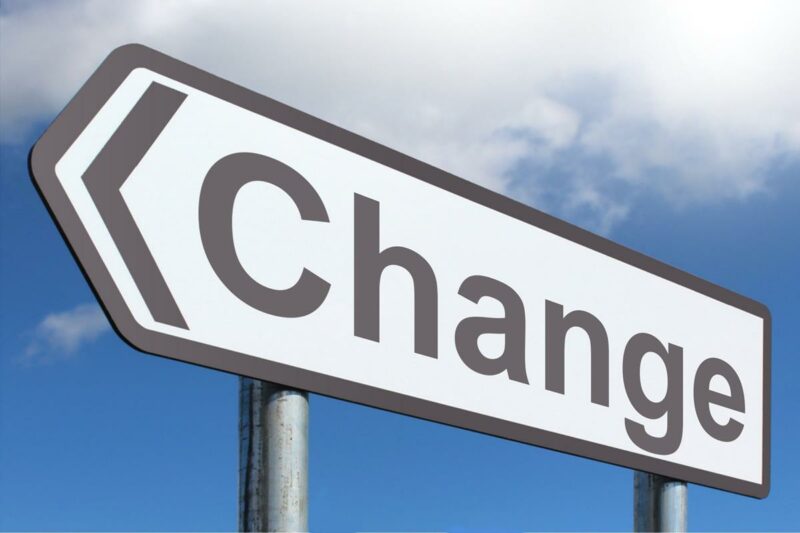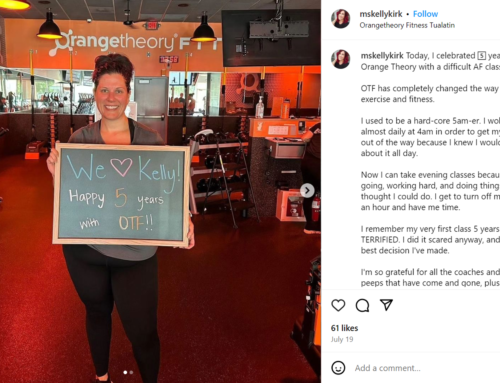The 6 Steps to Changing Habits
When you start something new, it’s normal that you don’t know where to start. There are usually things you can do, things you want to do, and things you have to do. It’s important to start at that point: in the things you have to do.
These steps are a guide to what you need to do to change habits.
Step 1: Identify what you want to change in your routine
Recognizing what habits are hurting me to start changing. The best way to realize that habits are what you want to change, is to write them on paper (or digital), it’s a way for you not to forget them and also physically visualize them outside your head.
Take a few days (I recommend a week) to write down those actions or attitudes that you think you want to change. The purpose of the list is to do a global analysis.
Surely you have more than two things that you want to change, and then you have a long list. The problem with long lists is that they are NEVER MADE, they are like mazes of stress and you don’t get anywhere with them.
That’s why you divide your list into several small lists. For example, take the list of 20 things to change and divide it into 4 lists of 5 things to change. Yes, it’s true that you have the same volume, but starting with a small list motivates you because you’ll see a lot more progress.
If you already have that small list, change the phrases in the form of purpose (writing what you want to achieve) and in the present tense.
Why?
Because it is a strategy to take action in the present, the future is uncertain but today we have full control to act. For example:
- «I drink more soda than water» –> “Today I shall drink enough water”
- “I don’t do any exercise” –>”Today I shall start exercising”
- “I go to the work without eating breakfast” –>”Today I shall eat a healthy breakfast before leaving”
Step 2: Make your goals ULTRA-SPECIFIC
The more obstacles are divided, the easier they are to overcome
Up to this point, we have a small list of purposes (goals). Now, take just one goal from your list that you want to start with.
Try to see that goal as a path in which to reach you require short achievable goals; that is, it makes every step a goal.
Why do many goals instead of a big one?
Because it’s much easier to reach a small goal than a big one. In fact a well-set goal is half the journey.
How can I split the goal?
Very easy, make your goal ultra-specific.
When the goals to be achieved are ULTRA-GENERAL rather than ULTRA-SPECIFIC, it costs much more to achieve the goal.
And what happens if the goal is not reached?… we feel a defeat (even if we make a breakthrough) and we refuse to continue.
That’s why it’s so important to be ULTRA SPECIFIC with goals!
For example:
- “I will drink enough water today”
- “Today I will start exercising”
These are excellent goals but they are NOT SPECIFIC, we need to dig even deeper:
- “Every two hours I will drink a glass of plain water”
- “Every day I shall wake up 15 minutes early so I can go for a run for 10 minutes”
- “Before I leave the house I will drink a fruit smoothie”
These goals are ULTRA-SPECIFIC and the best thing is that they are REACHABLE.
It’s up to you to make yourself from the list of habits you made in the previous step, break it into smaller ULTRA-SPECIFIC goals. Make your goals easy.
If you don’t know how, these questions can help:
- What specific and simple part can I start performing right now?
- What action would be easier for me to get started?
- At what time of day (hour) will I be doing this action?
In this way in addition to making your goal more achievable, you are giving a solution proposal to achieve the change of habit.
Remember that the ultra-specific goal must be achievable for you, this means that too easy to do, no matter that it is a small advance, because it is the beginning to take the second step. Make it so easy you can’t say no
Easy goals don’t depend on your daily motivation, nor do they require a lot of effort.
For example: instead of starting with 30 minutes of running, start with just 10 minutes of walking or light jogging. Then, once the action is set, you can gradually increase.
How many goals on my list should I start with?
Every single person is different, but I advise you to start with one goal at a time. This way you’ll have a lot more concentration to achieve it.
When you master it or the effort to carry it out diminish, it’s time to propose a second ultra-specific goal.
Step 3: Create an action plan
A goal without a plan is just a wish.
Up to this point we have: ultra-specific goals, which were written by answering the questions in step 2.
Everyone is different and has different routines, so I can’t give you the solution to your problem but I can help you design an action plan to solve the problem.
- What’s the matter? That action (habit) I want to change in my life
- What’s the solution? Make a change proposal
- How?…
Very easy! Just design your action plan, make your own strategy to achieve that goal.
If you set those ultra-specific goals they are already proposed to solve your problem. But it’s not enough. Now we need to create a plan to achieve the action we set out to do.
For example:
- Goal: “Every six hours I will drink a glass of simple water”
- Action Plan : “I will have a water bottle at all times within my reach”
- Goal: “Every day I will wake up 15 minutes early to go for a run for 10 minutes”
- Action Plan: “I prepare my running clothes the night before to go for a 10 minute run in the morning”
- Goal :”Before leaving home I shall drink a fruit smoothie “
- Action Plan: “The fruit is ready to be blended in a container in the fridge”
- And so on for all your ultra-specific goals….
If you look, to design the action plan you only need CREATIVITY, often we have a lot of imagination to make excuses, let’s be equally to achieve the goal.
Think of the way you can go to reach your goal.
I recommend that you start with a single action plan, for a single habit and then increase the intensity or number of habits.
Step 4: Choose a reminder
Make sure you make your goals visible
In your daily life you are already doing many habits (good or bad), the point is that that action is preceded by a reminder, which can be an image, a sound, an object, etc.
For example:
- Habit: Before I leave home I turn off the lights
- What reminds me of doing this? Grabbing my house keys
Another example:
- Habit: Eating Chocolate in the Office
- What reminds me of doing this? Seeing the chocolates on my desk
So, for each action there is something that triggers it. We use this same principle to incorporate a new action into your life.
Reminders are essential to create new habits, if you have an effective reminder you will be able to establish a new habit in your routine more easily, because there will be no way to forget it.
How do I choose a reminder for my ultra-specific goals?
Reminders can be actions you’re already doing out of habit, or anything else that visually reminds you to make your action plan.
Remember the examples above?
- Goal: “Every four hours I will drink a glass of simple water”
- Action Plan : “I will have a water bottle at all times within my reach”
- Reminder: “I’ll set an alarm on my phone every four hours”
- Goal: “Every day I willwake up 15 minutes before to go for a run for 10 minutes”
- Action Plan: “I prepare my running clothes the night before to go for a 10 minute run in the morning”
- Reminder: “I leave my things ready at the door of the room so I can’t leave without seeing them”
- Goal: “Before I leave home I’ll have a fruit smoothie”
- Action plan: “The fruit will be ready to be put in the blender inside a container in the fridge”
- Reminder: “I’ll put a note in the bathroom mirror to prepare the smoothie before I go out”
The main goal of this step is to create an EFFECTIVE reminder for you to achieve the action and reach the goal more easily.
Step 5: celebrate your progress
Our reward lies in the effort and not in the result
Now you know the steps to make the whole process:
- Remember
- Carry out the action plan
- Meet the ultra-specific goal EVERY DAY
Something’s missing here, don’t you think?…
Celebrate your progress!
When you succeed in doing your daily tasks correctly, celebrate yourself immediately afterwards with a round of applause, a smile or a few words to yourself.
Although it doesn’t seem important, you need a positive reward to do it again. This increases self-confidence and keeps you motivated to remain consistent.
Some actions generate a positive reward for themselves, any healthy habit has it. But why not choose an effective reward?
For example:
“My reward for going for a run will be a refreshing shower.”
At the end of the exercise, we feel exhausted and at first it seems that it is not a positive reward (although in the short and long term the exercise has incredible benefits). One way to reward yourself the effort is to take a shower, that refreshing feeling will surely give you a good post-workout reward.
It is important to know that the rewards are consistent with the goal to be met.
Don’t forget why you set out to improve your habits. If the main reason was to improve your health, the reward can’t be something that’s contradictory like eating a packet of chocolate cookies after running.
Put the 5steps into practice and start swapping your old habits for healthier habits!




